Planting japanese radish seeds (Sowing daikon radish seeds) – Japanese daikon radish growing
Grow japanese daikon radish (japanese white radish) in mulching cultivation. Last time, I added fertilizer to the daikon radish plot, prepared the soil (including soil sterilization), and made the daikon radish bed.
About 15 days have passed since preparing the soil. This time, I will plant japanese daikon radish seeds. (Growing daikon radish from seed.)
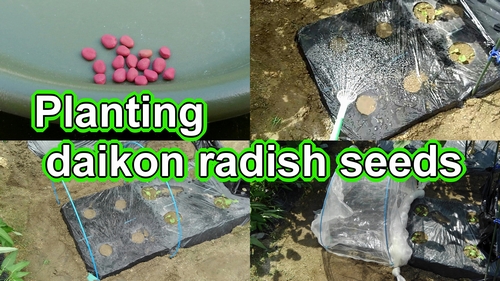
The main times to plant daikon radish seeds are “spring sowing" in April and “autumn sowing" in September. But I have only grown autumn-sown daikon radish. So, if you want to grow daikon, I recommend planting seeds in autumn. (In home gardens, space is limited, and eggplants or tomatoes are easier to grow in spring and summer than daikon.)
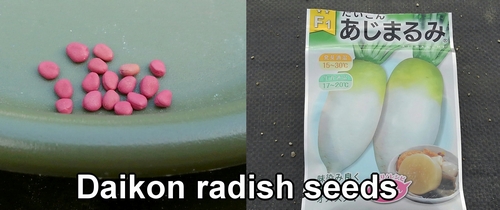
The daikon radish I am growing this year is a variety with short roots and is slightly thicker.
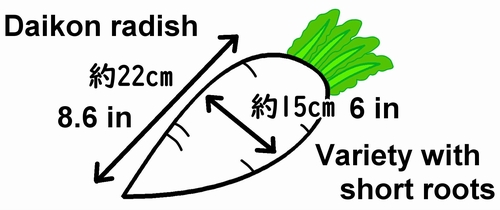
How to plant seeds of daikon radish (Steps for planting japanese white radish seeds)
To plant daikon radish seeds, first make 4 holes in a plot of about 60cm x 50cm (23.6 inches x 19.7 inches). The space between daikon radish plants is about 30cm (1 foot).
Use a mulch cutter to cut only the plastic on the mulch surface. Once you’ve made holes in the mulch, the daikon radish seed planting preparation is complete.
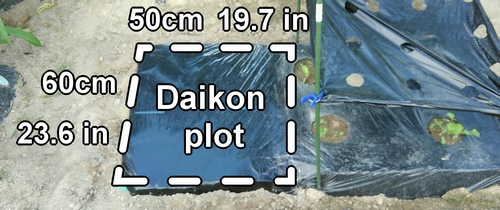
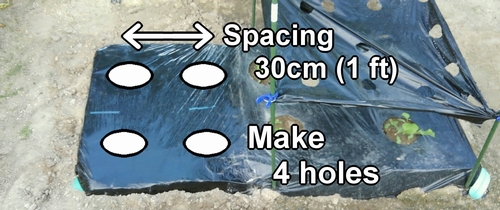
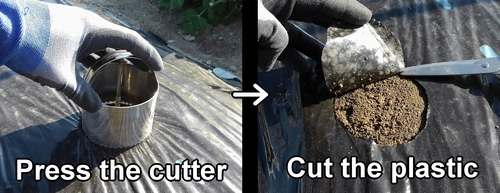
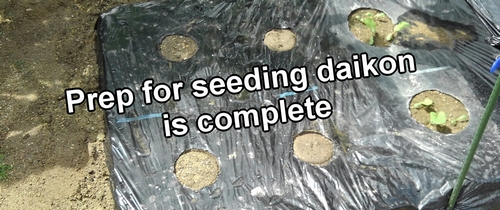
Sow 4 daikon radish seeds per hole in the mulch. The depth should be about 1cm (0.4 inches). Since daikon radish seeds are small, use a toothpick or similar tool to push them to a depth of 1cm (0.4 inches).
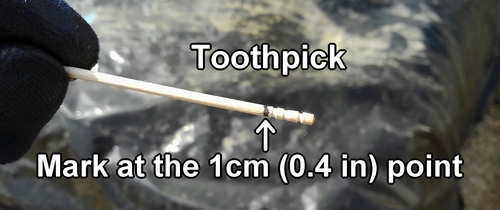
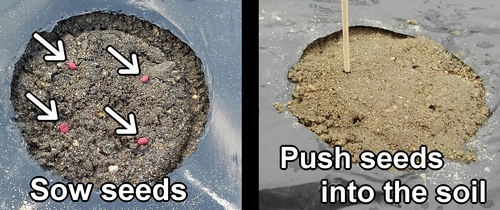
After sowing the daikon radish seeds, cover them with soil and press down with your hand. Covering with soil and pressing down is called firming, and it’s an important step in planting daikon radish seeds.
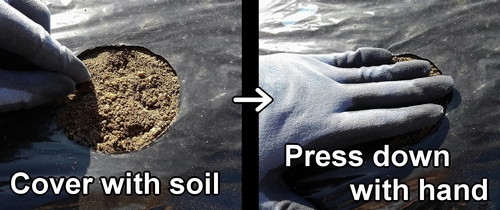
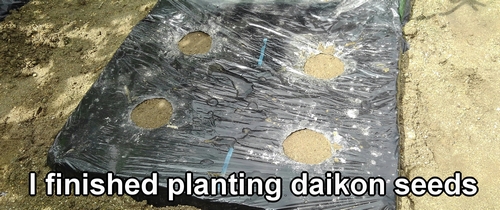
Pressing down the soil helps the seeds and soil stick together. This allows moisture in the soil to reach the seeds better, making it easier for them to sprout. Firming the soil also reduces moisture evaporation, preventing the seeds from drying out.
Water the soil to the point of moisture. (Be careful not to overwater, as it can cause the seeds to rot.)
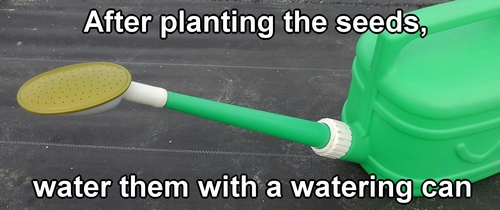
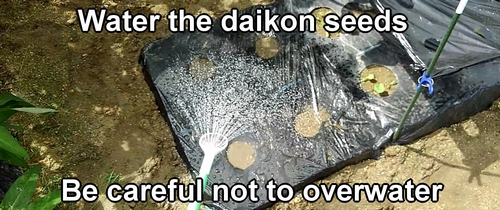
Set up an insect netting in the daikon radish plot (Insect protection for japanese daikon radish) – Daikon netting tunnel
Finally, let’s talk about insect netting for daikon radish. Daikon radish is a “cabbage family vegetable", and this type of vegetable tends to attract pests. So, I will put up an insect netting over the planting bed to keep bugs away. (I will use stakes to make a grow tunnel and cover it with the insect netting.)
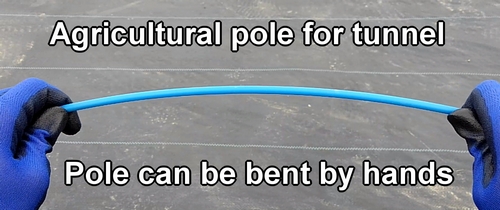
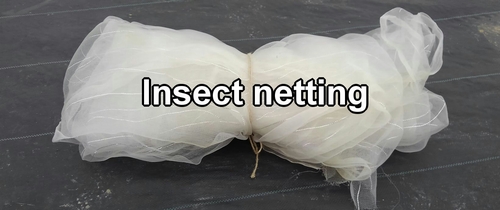
Insert the flexible poles diagonally toward the inside of the bed and set up 2 poles. The poles should be inserted about 20cm to 30cm (8 inches to 12 inches) deep.
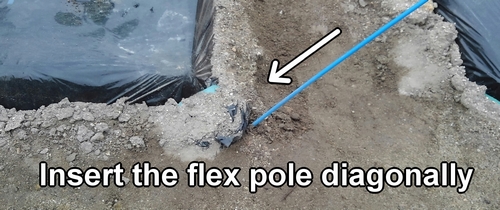
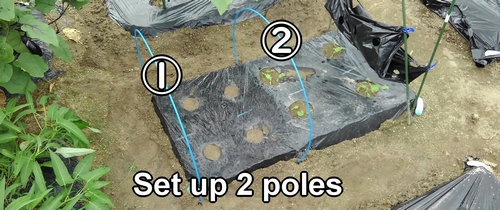
Cover the net over the poles. The insect netting has colored lines in the center, so place it with the lines in the middle of the bed.
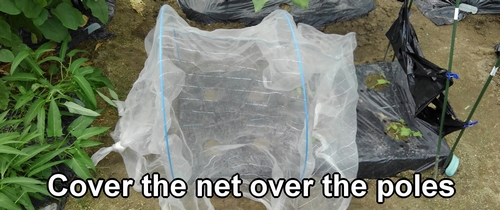
Make 3 knots in the net, and put U-shaped garden pins through them to stick them into the ground to hold it in place. Please be careful not to insert the pin directly into the insect netting as it may cause holes.
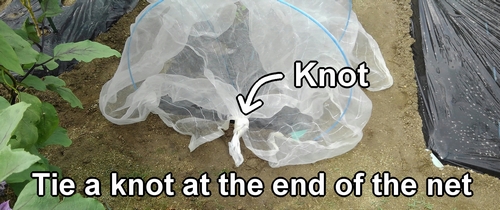
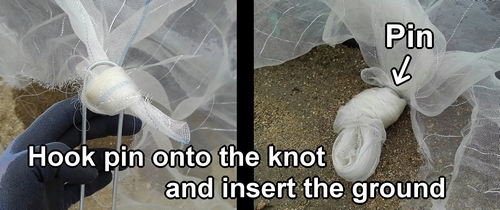
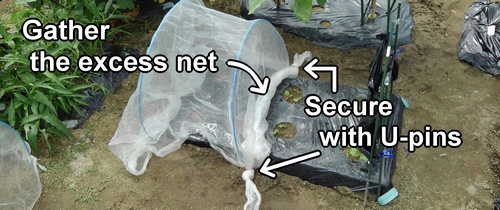
The insect netting on the side of the flexible poles is secured with a tunnel clips. The tunnel clips are fitted onto the flexible poles, sandwiching the insect netting in between. The tunnel clip is used with the projection part facing downwards. (Embed the projection part slightly into the ground.)
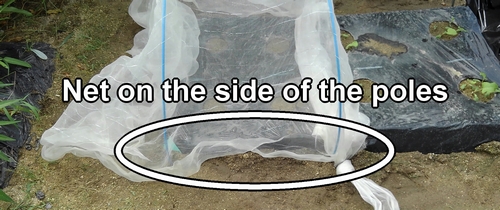
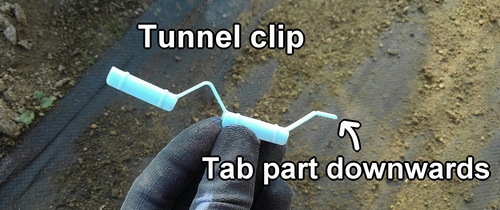
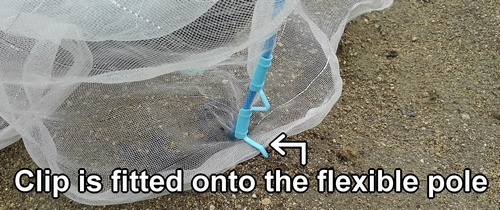
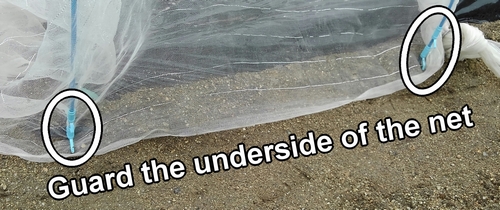
Tie and gather any excess of the insect netting.
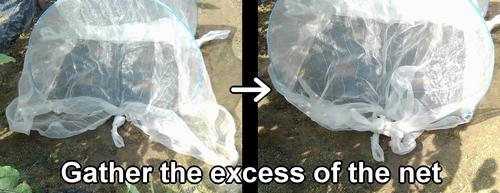
Secure the insect netting with clothespins. With this, the daikon radish seed planting and insect protection are finished.
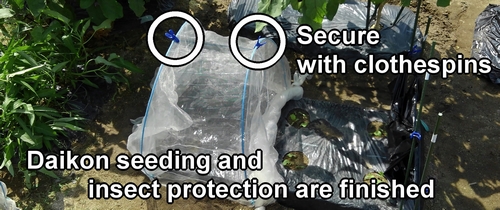
Grow tunnel (garden grow tunnel) is often used for growing autumn and winter vegetables. It’s useful for pest and cold protection, so it’s good to remember. The way to make a cultivation tunnel is also introduced in this article.
Following is the video for how-to. English subtitles are available.
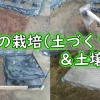
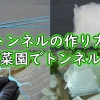
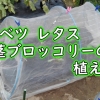
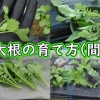
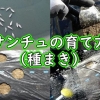
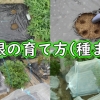




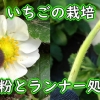


Discussion
New Comments
No comments yet. Be the first one!